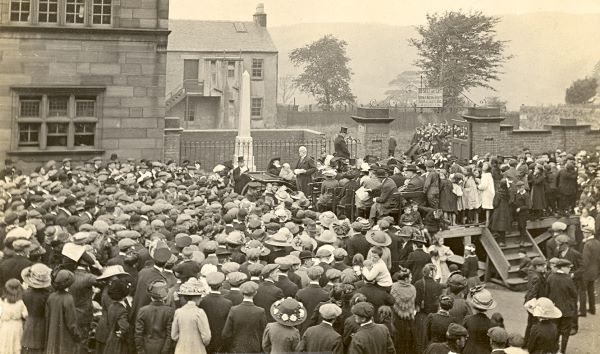

John Robertson
John Robertson
Born in Neilston, John Robertson (1782-1868) started an apprenticeship with a spinning wheel wright as a young boy. He gained work experience in Perth and Glasgow, before setting up his own engineering business in the city. Robertson developed a steam engine, which was subsequently bought by Henry Bell and installed in Bell’s Comet. This wooden vessel was hailed as the first successful steamship to sail commercially in Europe, and was credited with being responsible for the emergence of hordes of steam-powered vessels travelling up and down the Clyde.
The importance of Robertson’s contribution is evident from the presence of his steam engine in the Science Museum in Kensington, London and from an exact replica of the steamship itself, which can be viewed in a special memorial garden in the centre of Port Glasgow.
Sadly, although prosperous for a time during his life, he died bankrupt on 19 November 1868 and is buried in the Southern Necropolis, near the Gorbals in Glasgow.

During the centenary celebrations for the launch of the Comet in 1912, Robertson’s contribution was commemorated in his native Neilston. On the suggestion of the Rev. Robert Barr, a committee was formed for the purpose of erecting a memorial to him. On 24 August 1912, a large granite obelisk, costing £85 and produced by Gray & Co., Glasgow, was unveiled by Mrs. Margaret Pollock Glen (Lady Glen) amid much celebration. Mrs. Glen had served on the committee and donated the piece of land, to the right of the Glen Halls on Main Street ,where the memorial was originally sited.

At the ceremony, a platform was erected in front of the monument and drew a large crowd. Mr. A. A. Hagart Spiers of Elderslie presided over local dignitaries such as Provost Paton, Ex-Provost Cochrane, Major Pollock and Mr. and Mrs. Zechariah Henry Heys, as well as many relatives of John Robertson himself. The Rev. Robert Barr gave an entertaining speech giving an account of John Robertson’s life along with an account of the committee’s work. He also mentioned that the name The Comet came from the Great Comet of 1811 which was visible in the night sky for about 260 days.
The obelisk still stands today although on a different site and has an inscription of a tracing in lead of the Comet’s engine along with the following text.
To the memory of John Robertson, who was born in Neilston, on December 10th 1782, the designer and
creator of the engine of the “Comet” which was the first steam boat that regularly traded in Europe.
Erected by parishioners and friends, 24th August 1912
A beautiful silver replica of the John Robertson memorial, an 11inch model, was given as a souvenir to Mrs. Glen at the unveiling ceremony. It disappeared but turned up again at auction and was purchased by East Renfrewshire Council in 1997. The model is now in the care of East Renfrewshire Culture & Leisure and is on display in Neilston Library.
Further Reading
Hughson, Martin, John Robertson, engineer, designer of the Comet’s engine, Barrhead & Neilston Historical Association, 1989
Osborne, J Craig, The Comet and her creators: the men who built the PS Comet and her career, Osborne, J C, 2007
